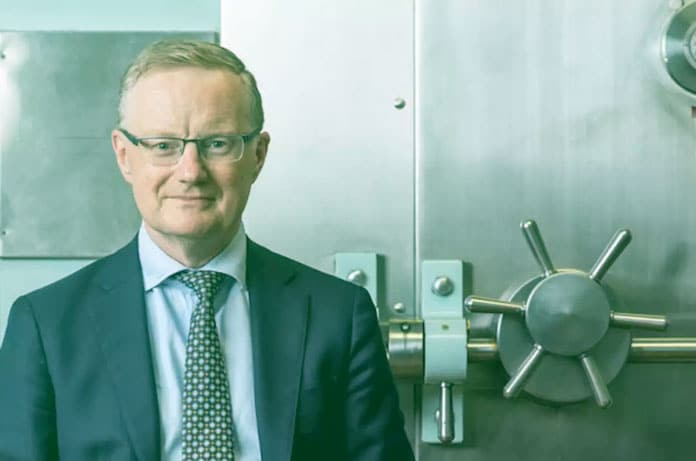
RBA Governor Philip Lowe has conceded there could be an interest rate rise in 2022 but it “seemed a very, very low probability’.
In an address to the Australian Business Economists, Lowe focussed on on recent trends in inflation and the implications for the RBA’s monetary policy.
Dr Lowe repeated a point he made a couple of weeks ago – that is, the latest data and forecasts do not warrant an increase in the cash rate in 2022.
But he failed to completely rule out interest rate rises next year. Inflation is not the only measure the RBA consider and Dr Lowe again reiterated wages growth as another factor that the RBA will assess before raising interest rates.
In regards to inflation trends in Australia, Lowe explained: “Many of the factors that have caused inflation to rise elsewhere are also at play in Australia, though most of these are more muted here. There are also significant differences as well.
“As in the rest of the world, Australia has experienced a lift in inflation, although it is less pronounced than in many other countries. In underlying terms, inflation was 0.7 per cent in the September quarter and 2.1 per cent over the year to the September quarter.
“While this outcome was higher than expected, it is important to remember that at 2.1 per cent, underlying inflation is only just above the bottom of the 2 to 3 per cent target band and remains lower than the average for the past three decades.
ALSO READ: Three Key Fixed Income Risks You Need To Know About
“The higher price of oil in global markets has also affected the headline inflation rate in Australia, with petrol prices up by 24 per cent over the past year.
“The effects of the shift in consumption patterns are also evident. Some imported goods prices have increased because global goods prices have increased and domestic retailers are discounting by less in response to strong domestic demand. For example, new car prices have increased at the fastest rate since 2001 and the prices of electronics and computing equipment have fallen at the slowest rate for many years.
“The prices of some other consumer durables, including household furnishings (but not clothing), have also been increasing a little more strongly than in recent years.
“The shifting demand–supply balance is also evident in the higher cost of building a new home. Again, this is the result of a combination of global price rises for many building materials – including timber and steel – and a domestic price response to strong demand for new homes and renovations (Graph 12). The price of constructing a new dwelling – which has a weight of 8½ per cent in the CPI basket – increased by 3.3 per cent in the September quarter and further increases are expected.
“So there are similarities with other countries. I would now like to turn to two important differences.
“The first of these is energy prices. Energy prices in Australia have been trending lower for a number of years, after earlier large price increases (Graph 13). This recent experience has mainly reflected lower wholesale electricity prices, which is in part a result of increased capacity from wind and solar generators. In contrast, a number of other advanced economies have experienced very large increases in electricity prices as their power systems struggle to meet demand.
“The second and more important difference is what has been happening in the labour market.
“Labour force participation in Australia remains high and the wage-setting processes – including multi-year enterprise agreements and the annual minimum wage case – impart a degree of inertia into aggregate wage outcomes. Wages growth is expected to pick up, but to do so only gradually. Our business liaison suggests that most businesses retain a strong cost control mindset and are seeking to use measures other than raising base wages to attract and retain staff. There are some jobs that are in very high demand where wages have increased, but we are yet to see a broad-based pick-up in wages growth. In contrast, as I discussed earlier, wages growth has already picked up markedly in some other countries.
“Turning to the outlook, we expect underlying inflation to pick up further, but to do so only gradually. On the one hand, some normalisation in consumption patterns here and around the world should partly alleviate the current upward pressure on inflation. But on the other hand, we are expecting a gradual pick-up in wages growth as the labour market tightens.
“In terms of the specifics, our central forecast is for the Wage Price Index to increase by 2½ per cent over 2022 and 3 per cent over 2023 (although overall labour costs are expected to increase somewhat faster than this). Underlying inflation is expected to be 2¼ per cent over 2022 and 2½ per cent over 2023 (Graph 14).”
Lowe then turned the focus of the address to the implications for monetary policy in Australia.
“The recent inflation data indicate that we are making better-than-expected progress towards our inflation objective. This is welcome news. But we still have a way to go.
“Underlying inflation has only just returned to the target range for the first time in six years and is only just above the bottom of that target range.
“In terms of the real economy, the recovery is back on track following the interruption caused by the Delta outbreak. This recovery is being underpinned by high rates of vaccination and expansionary policy settings. We are expecting the recovery to continue and the unemployment rate to trend lower, reaching 4 per cent by the end of 2023. The last time the unemployment rate was lower than this was in the early 1970s.
“Over the past 50 years, an inflation rate in the twos and an unemployment rate in the fours would have been considered very good outcomes. We need to remember, though, that we are in this place only because of extraordinary policy support. Over time, as a country we will need to refocus on the underlying drivers of growth in the economy and jobs.
“In terms of the cash rate, the Reserve Bank Board has said that it will not increase the cash rate until inflation is sustainably in the target range. It is hard to precisely define what ‘sustainably in the target range’ means. But we want to see underlying inflation well within the 2–3 per cent range and have a reasonable degree of confidence that it will not fall back again. The trajectory for inflation is also important, with a slow drift up in underlying inflation having different policy implications to a sharp rise. Another important consideration will be developments in the labour market.
“Unless labour productivity growth is very weak, it is likely that wages will need to be growing at 3 point something per cent to sustain inflation around the middle of the target band. This doesn’t mean that we have a target for wages growth or that wages growth is the only determinant of inflation. Rather, we are using wages growth as one of the guideposts in assessing progress towards our goal and whether inflation is sustainably in the target range. As we get closer to that goal, you could expect us to provide further guidance, including our projections for inflation.
“Given the global and domestic forces I have discussed, the inflation outlook is more uncertain than it has been for some time. But our central scenario is that underlying inflation reaches the middle of the target by the end of 2023. If this comes to pass, it would be the first time in nearly seven years that we will be at the mid-point. This, by itself, does not warrant an increase in the cash rate. As I have said, much will depend upon the trajectory of the economy and inflation at the time. It is still plausible that the first increase in the cash rate will not be before 2024.
“There are, of course, other possibilities. It is possible that the global inflation shock is more persistent and that the rebalancing of consumption patterns does not result in an easing of inflation pressures. In addition, we have little historical experience as to how the Australian labour market works at an unemployment rate of 4 per cent. There is also the question of the effect on labour supply of the reopening of the international border. It is therefore possible that faster-than-expected progress continues to be made towards achieving the inflation target. If so, there would be a case to lift the cash rate before 2024. It is also possible that progress will be slower than expected, which would result in the cash rate staying at current levels for longer.
“Finally, I would like to repeat a point I made a couple of weeks ago – that is, the latest data and forecasts do not warrant an increase in the cash rate in 2022. The economy and inflation would have to turn out very differently from our central scenario for the Board to consider an increase in interest rates next year. It is likely to take time to meet the condition we have set for an increase in the cash rate and the Board is prepared to be patient.”






























